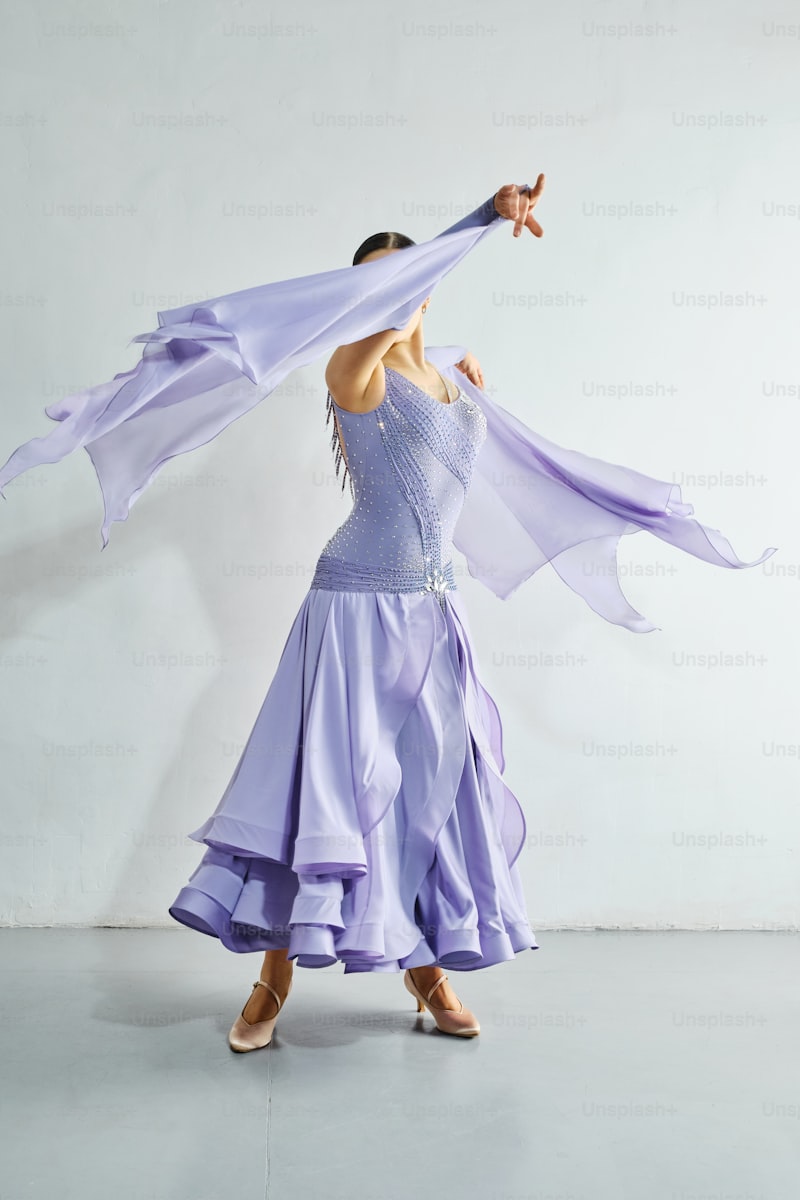Unlocking the Elegance: Graceful Movement in Veils
Understanding the Art of Graceful Movement in Veils
The concept of graceful movement in veils conjures images of delicately draped fabrics flowing effortlessly with the body. Whether in dance, fashion, or performance art, veils add an enchanting element that captivates audiences. This article explores the beauty, techniques, and cultural significance behind graceful movement in veils, guiding you through its rich history and modern-day applications.
The Cultural Heritage of Veils
Throughout history, veils have been used in various cultures to symbolize modesty, elegance, and beauty. In many societies, veils are more than mere fashion; they represent deep cultural traditions. For example, in Middle Eastern and South Asian cultures, veils serve as a way to express femininity and grace. In contemporary art and performance, they transform the dancer’s body into a canvas, allowing for expressive movements that capture the audience's attention.
Veils in Performance Arts
One of the most striking forms of graceful movement in veils can be observed in dance—particularly in styles such as belly dance, contemporary dance, and theatrical performances. Dancers utilize veils to enhance their movements, giving the impression of fluidity and elegance. The use of different fabrics and designs can also affect how a dancer moves, as lighter materials tend to create more dynamic visual effects.
| Dance Style | Key Features | Recommended Materials |
| Belly Dance | Fluid hip movements, intricate hand patterns | Georgette, chiffon |
| Contemporary Dance | Expressive, storytelling | Silk, tulle |
| Theatrical Performance | Character-driven, emotional | Velvet, organza |
Techniques for Mastering Graceful Movements
To truly embody graceful movement in veils, dancers and performers must focus on several key techniques:
1. Understanding Weight and Flow
In dance, the effective handling of a veil requires an understanding of how to control the weight of the fabric. Lighter materials like chiffon and Georgette allow for airy movements, while heavier fabrics provide structure but may require more effort to manipulate. Using your body weight to lead movements helps achieve fluidity and grace.
2. Practicing Body Alignment
The importance of proper posture and alignment cannot be overstated. Keeping your core engaged and shoulders relaxed ensures that your movements are fluid. This will help in maintaining balance while performing intricate maneuvers with your veil, enhancing the overall aesthetic of your performance.
3. Incorporating Breath
Breathing deeply and rhythmically not only calms the performer but also syncs movements with the flow of the fabric. Breath serves as an anchor, guiding actions and helping to create a seamless connection between the body and the veil.

Inspiration: Iconic Performances with Veils
Throughout history, numerous performances have showcased the enchanting appeal of graceful movement in veils. From ancient rituals to modern-day recitals, these performances leave lasting impressions on audiences. Iconic figures in the world of dance, such as Martha Graham and Saidiya Hartman, effectively used movement with veils to convey complex narratives and emotions. Their unique approaches allow us to appreciate the veil not just as an accessory but as an integral part of the storytelling process.
Famous Dances Featuring Veils
Here are a few notable works that highlight the beauty of veils in performance:
- “Carmen” by Bizet: This opera features dancers employing veils in crucial segments, bringing depth to the narrative.
- “The Dying Swan” by Swan Lake: This classic ballet captures a delicate and graceful portrayal of sorrow, enhanced by the use of fabric.
- Shakira’s “Hips Don't Lie”: The use of veils in this music video exemplifies how modern singers can incorporate graceful movements in their performances.
Fashion Perspectives on Veils
In addition to their role in dance, veils have become a prominent feature in haute couture fashion. Designers often play with draping and layering techniques, transforming veils into stunning statements. This intersection of fashion and movement provides an additional realm in which graceful movement in veils can be appreciated.
Fashion Trends Involving Veils
Current trends have seen a resurgence of veils in runway shows, with designers drawing influences from historical pieces, enhancing them with modern fabrics and silhouettes. These movements not only showcase the garments but also highlight the elegant fluid motion a veil can bring to a look. The minimalist aesthetic allows the fabric to speak for itself, creating breathtaking visual appeal.
Conclusion: The Lasting Impact of Graceful Movement in Veils
In conclusion, the significance of graceful movement in veils transcends time, ultimately weaving a rich tapestry of cultural heritage, artistic expression, and fashion innovation. As we explore different styles and techniques, we are reminded of the intrinsic beauty that folds and flows in the dance of veils. Whether you are a dancer, a fashion enthusiast, or simply an admirer, embracing the art of movement in veils can lead to a deeper appreciation of its elegance and significance.
As you embark on your journey into the world of graceful movement in veils, consider the following tips:
- Choose the right fabric for your intended style and comfort.
- Practice consistently to master the techniques of movement and control.
- Watch performances to gain inspiration and learn new techniques from experienced performers.
With dedication and passion, you’ll find that the enchanting world of graceful movement in veils can elevate your artistic expression and deepen your connection to a long-standing cultural tradition.